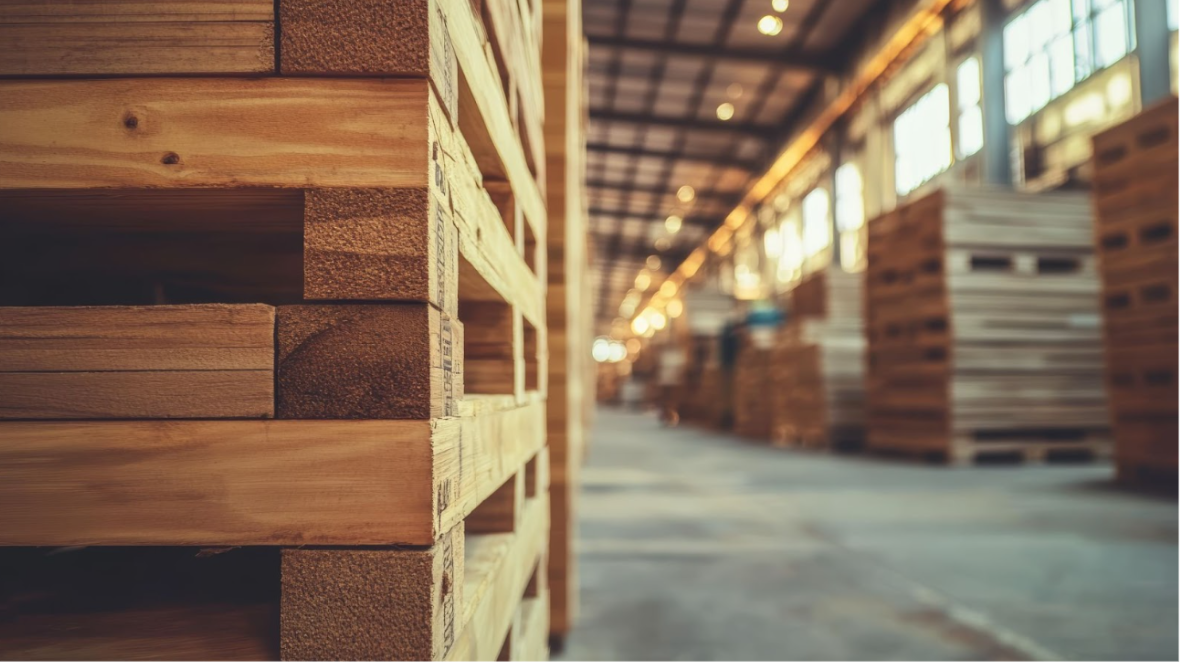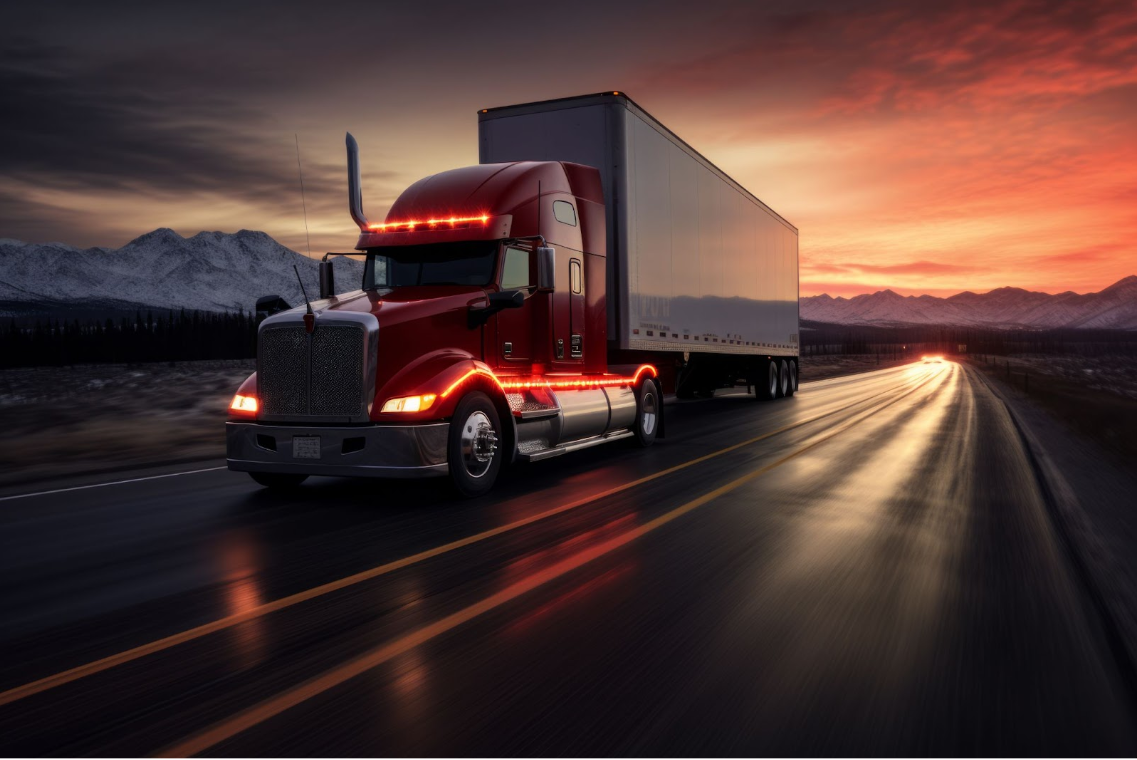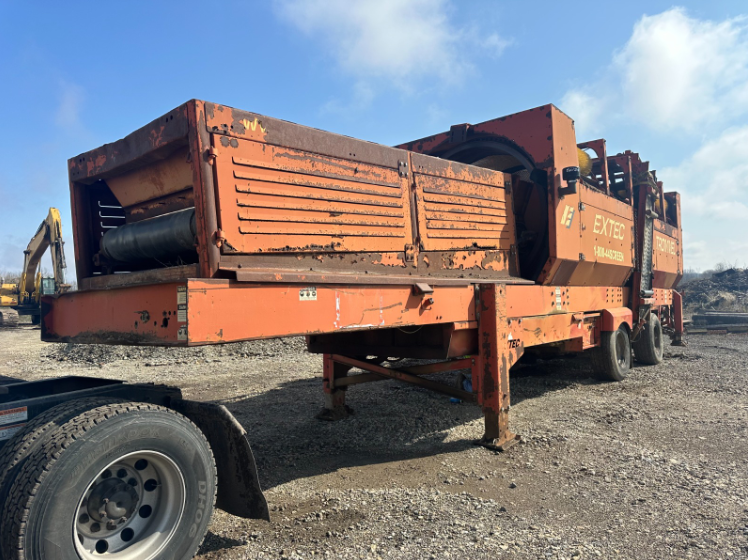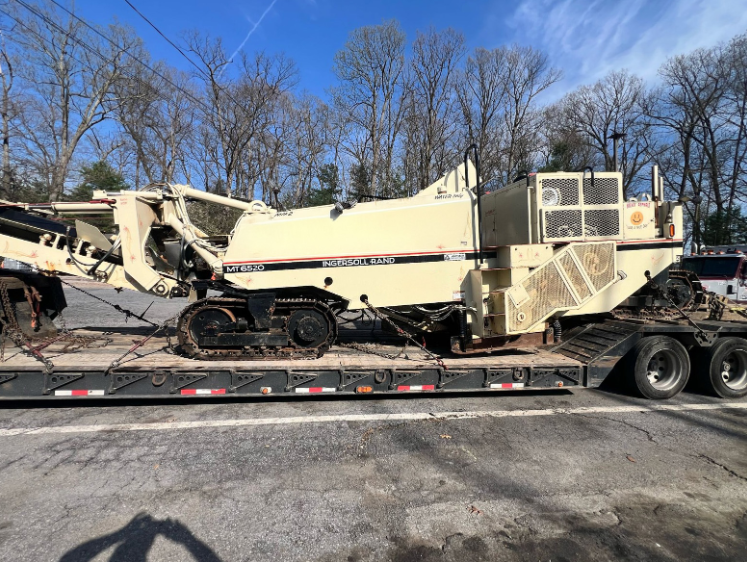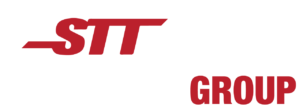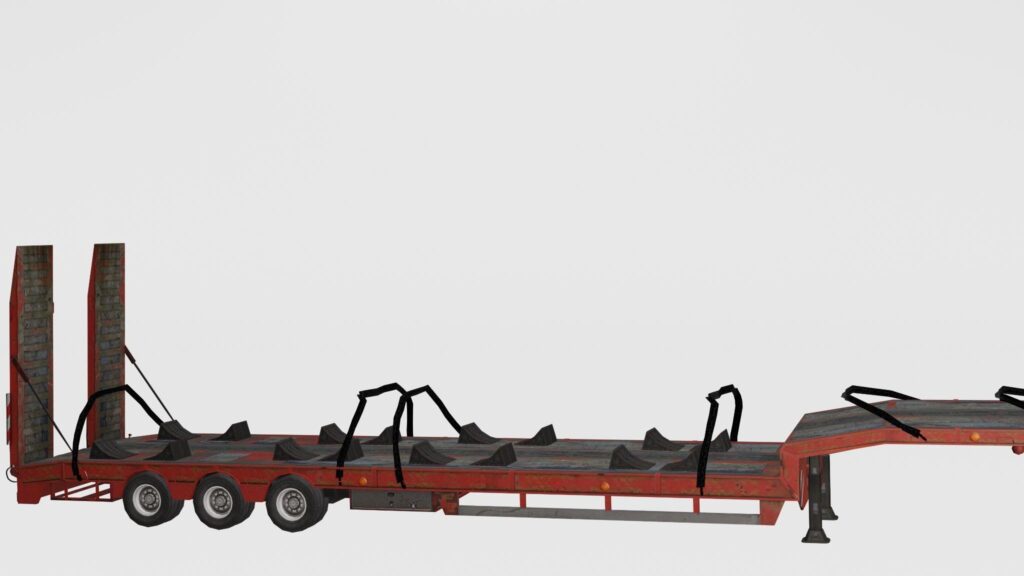
At STT Logistics Group, we transport a wide selection of cargo, from shiny luxury yachts to used cars, and from brand new 160,000 lb cranes to huge generators purchased at auction. One thing’s for sure in this business: not all cargo travels the same way. Some machinery can sit confidently on a flatbed in the open air, while other types of equipment demand full coverage and privacy. It’s very important to get the right trailer because making the wrong decision can lead to damage, delays—or just an unnecessary dent in your transport budget.
That’s where the open vs enclosed trailer debate comes in.
Whether you’re shipping overseas, across multiple U.S. states, or coast-to-coast, the trailer you choose affects everything: price, timing, cargo safety, and even availability. So, how do you decide?
In this post, we’ll break it down for you. You’ll learn the difference between open trailers and enclosed trailers, when each is the better option, and what kind of freight fits each method. We’ll also explain how STT walks customers through the process, providing custom freight solutions with one point of contact and peace of mind every mile of the way.
You call, we haul. But first—we plan.
What Is Open Trailer Transport?
An open trailer is, as the name suggests, an exposed flatbed or car hauler without any overhead or side protection. It’s the most common form of ground transport for commercial equipment, along with machinery and vehicles that can handle a bit of wind and weather.
From flatbed trucks to step-decks, these trailers are considered the workhorses of the logistics world. They have a number of advantages, the main ones being that they’re:
✔️ Fast to load and unload
✔️ Readily available
✔️ Budget-friendly
That’s why American highways are full of them hauling everything from tractors to shipping containers.
Drive-on and oddly shaped cargo
Open trailers are especially popular for drive-on machinery—think excavators, loaders, or wheeled construction gear—because the open design allows equipment to be driven or craned directly onto the deck. And when it comes to large or irregularly shaped cargo, open trailers can often accommodate dimensions that an enclosed box simply can’t.
Negatives
With exposure comes trade-offs. Cargo on open trailers is vulnerable to the elements, dust, road debris, and anything else that might be flying around. For equipment that’s durable or already designed for tough job sites, this isn’t usually a problem. For more sensitive cargo, though, it’s a different story.
Best for: rugged construction equipment, vehicles, and short-haul deliveries where speed and price matter.
What Is Enclosed Trailer Transport?
An enclosed trailer—sometimes called a closed trailer—provides complete physical protection for your cargo. It’s a bit like a rolling garage, with four walls, a roof, and a lockable door. If you’re shipping something valuable, delicate, or private, this is your go-to.
These trailers come in various sizes—from a 5×8 enclosed trailer perfect for smaller loads to a 6×12 enclosed trailer that fits larger, more sensitive freight. Whatever the size, the selling point is the same: maximum protection.
Enclosed trailer transport is ideal for:
- Classic or luxury vehicles
- Auction purchases in uncertain condition
- Machinery with sensitive electronics or custom parts
- Equipment traveling long distances or through unpredictable weather

Inside an enclosed trailer, cargo is shielded from rain, snow, sun, and road grit. It also benefits from added theft protection—a major plus for high-value items like luxury boats.
However, that peace of mind comes at a cost. Enclosed transport is usually more expensive than open options and may have longer lead times due to limited availability. But when the cargo matters? It’s worth it.
Best for: delicate equipment, high-value vehicles, long-haul or cross-border freight, and anything where condition on arrival is non-negotiable.
Feature Comparison: Open vs Enclosed Trailers
Choosing between open and enclosed trailer transport depends on your priorities: protection, price, timing, and cargo type. Here’s how the two stack up:
| Feature | Open trailer | Enclosed trailer |
| Cost | More affordable | Higher (added protection) |
| Cargo protection | Exposed to elements | Fully enclosed, weatherproof |
| Access | Easy load/unload (crane/forklift) | Secure but tighter access |
| Privacy | None | High (cargo hidden from view) |
| Best use case | Durable equipment, vehicles | Luxury items, sensitive loads |
| Availability | Widely available | More limited |
Let’s say you’re transporting a weatherproof excavator from Texas to Georgia. You’re not worried about scratches or rain. In that case, a flatbed trailer is a fast, reliable, and cost-effective solution. But if you’re shipping a freshly restored vintage car—your pride and joy—or a piece of equipment with exposed sensors and electronics that could get damaged, you’ll want the enclosed option for total protection.
At STT Logistics Group, when deciding on trailer type, we also need to look at other factors such as route, climate, cargo condition, and time constraints to recommend what’s best for the job. Because in logistics, one size never fits all.
What if It Won’t Fit an Open or a Closed Trailer?
Sometimes, neither an open nor an enclosed trailer will do the job. When you’re dealing with what’s called out-of-gauge cargo—like oversized equipment that exceeds height, width, or weight limits—you’ve entered the realm of special transport.
Common examples of out-of-gauge hauls include:
- Construction equipment that can’t be disassembled
- Impact crushers, mobile scalping screeners, or tub grinders
- Industrial generators or custom-built loads with unusual specs
These jobs may require:
- Custom permitting and routing
- Multi-axle or extendable trailers
- Escort vehicles for certain road segments
- Cranes or hydraulic lift assistance at pickup and delivery
Because, after all, however hard you try, you won’t be able to accommodate a 160,000 lb crane on a small open trailer or even a larger 6×12 enclosed trailer. This is where STT steps in with Plan B.
Multi-Axle and Extendable Trailers
Some jobs are simply too big for standard solutions. When freight exceeds typical length or weight thresholds, we step into the world of specialized trailers—specifically, multi-axle and extendable trailers. These heavy-duty platforms are engineered to carry massive or unusually long loads, all while meeting safety and compliance standards across multiple jurisdictions.
Multi-Axles
With multiple axles, these trailers can distribute weight more easily and stay within legal axle load limits.
These trailers are commonly used for:
- Cranes and bulldozers exceeding 120,000 lbs
- Transformers, generators, and other high-density equipment
- Loads requiring additional structural support over longer distances
Key features include:
- Load capacities up to 200,000 lbs or more
- Configurable axle setups (including jeeps, boosters, and dollies)
- Detachable goosenecks for easier loading
- Hydraulic suspension for stability and adjustability on uneven roads
The main goal is to protect both the load and the road—spreading weight across more axles reduces stress on bridges, highways, and the trailer itself.
Extendable Trailers
Also called expandable or telescopic trailers, extendable trailers are designed for cargo that’s simply too long for standard flatbeds—think utility poles, wind turbine blades, or long industrial tanks.
They work by sliding open mid-frame to increase deck length, then locking into place when fully extended. Depending on the model and build, an extendable trailer can offer:
- Deck lengths ranging from 48 ft to 80+ ft
- Concentrated load capacities of 90,000 lbs over 10 feet
- Options for rear-steering axles or load height adjustments
- Smooth operation using track-and-pin or hydraulic extension systems
Because many of these trailers are modular, they allow for tailored setups depending on what you’re hauling—and what road rules you need to keep to.
When We Use Them
If your load is too long, too heavy, or both, our dispatchers and brokers will recommend a specialized configuration—and it goes without saying that we’ll handle the permitting, pilot escorts, and route planning that go with it. You don’t need to know the trailer specs—we do. You just need to know your cargo’s in good hands.
Which Trailer for Which Load? A Quick Comparison
Still curious about how different loads call for different equipment. Here’s a look behind the scenes. These examples show how freight type, size, and special considerations influence our trailer choices.
| Load example | Approx. dimensions & weight | Special considerations | Recommended trailer type |
| Bulldozer (standard) | 12 ft L × 8 ft W × 9 ft H / 45,000 lbs | Weather-resistant; can be driven onto deck | Small Open Flatbed Trailer |
| Restored 1967 Mustang | 15 ft L × 6 ft W × 5 ft H / 3,000 lbs | Paintwork protection; high value; non-exposed transport | Enclosed Trailer |
| Vintage aircraft wing | 38 ft L × 6 ft W × 6 ft H / 8,000 lbs | Extra length; delicate fiberglass shell; needs side clearance | Extendable Trailer |
| 72,000 lb industrial forklift | 20 ft L × 9 ft W × 11 ft H / 72,000 lbs | Heavy weight; requires crane loading at both ends | Multi-Axle Trailer |
| Wind turbine blade (single) | 150 ft L × 8 ft W × 10 ft H / 30,000 lbs | Ultra-long; requires rear steering and police escort | Extendable Trailer |
| Cryogenic storage tank | 45 ft L × 9 ft W × 13 ft H / 60,000 lbs | Pressurized interior; sensitive to vibration and temperature | Enclosed Trailer (custom climate) |
| Oversized mining dump truck chassis | 30 ft L × 14 ft W × 12 ft H / 110,000 lbs | Requires pilot car; restricted hours; wide load signage | Multi-Axle Trailer |
| 5×8 enclosed load of electronic parts | 5 ft L × 8 ft W × 6 ft H / 2,500 lbs | Needs dust, moisture, and theft protection | Small Enclosed Trailer |
| Steel bridge beam (section) | 65 ft L × 8 ft W × 4 ft H / 40,000 lbs | Oversized length; uneven weight distribution; overhead wires | Extendable Trailer |
| Auctioned tractor in rough condition | 13 ft L × 7 ft W × 9 ft H / 20,000 lbs | Open air OK; needs winch or crane for loading due to condition | Open Flatbed Trailer |
How STT Helps You Decide
Not every customer arrives knowing which trailer they need—and that’s completely fine. That’s why we provide full consultative support before we haul.
We ask the right questions, such as:
- What’s your timeline?
- What’s the condition of the equipment?
- Does it need weather protection?
- How sensitive is it to road vibration or dust?
When you work with STT Logistics Group, you get: - A single point of contact
- Transparent pricing
- Peace of mind
- A smart match between cargo and method
You call. We haul. That’s all.
Case Study: Choosing the Right Trailer for a Heavy Haul
One of our recent cross-country hauls perfectly illustrates the importance of matching cargo to the right trailer. STT broker Diego Ascencio oversaw the shipment of two industrial forklifts, each weighing 72,000 lbs, from Ohio to Texas—a 1,680-mile journey. Because of their size and weight, we deployed two RGN (Removable Gooseneck) trailers.
Other challenges included:
- Coordinating crane services at both ends
- Handling oversized permitting across state lines
- Ensuring team communication between brokers, drivers, and dispatch
Thanks to careful planning and the right trailer selection, the job was executed with zero delays or surprises. Another example of how STT combines experience with tailored solutions.
Open or Enclosed? Let’s Make the Call Together
There’s no “one-size-fits-all” in logistics—and that’s especially true when it comes to trailer types. Whether you’re moving rugged equipment or rare collectibles, choosing the right trailer can save you time, money, and headaches.
Open trailer transport is quick, cost-effective, and built for durable goods.
Enclosed trailer transport is your best bet for high-value or sensitive freight.
Special transport covers everything too large or too unique for standard options.
Need help deciding? That’s what we’re here for.
Request a quote through our website or call us directly at +1 (786) 709-9664.
We’ll handle the planning—so your freight rolls out right, from the very first mile.
